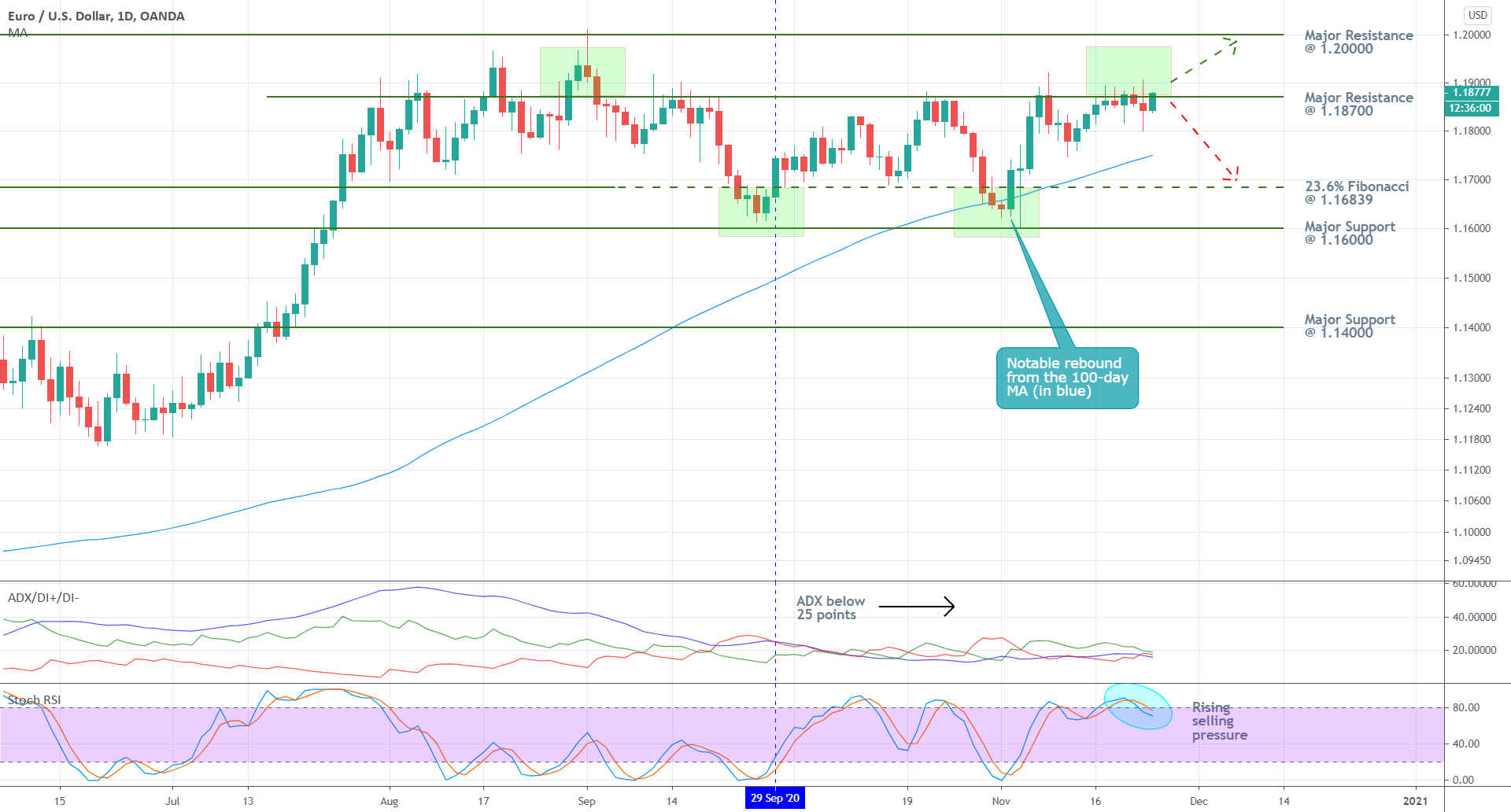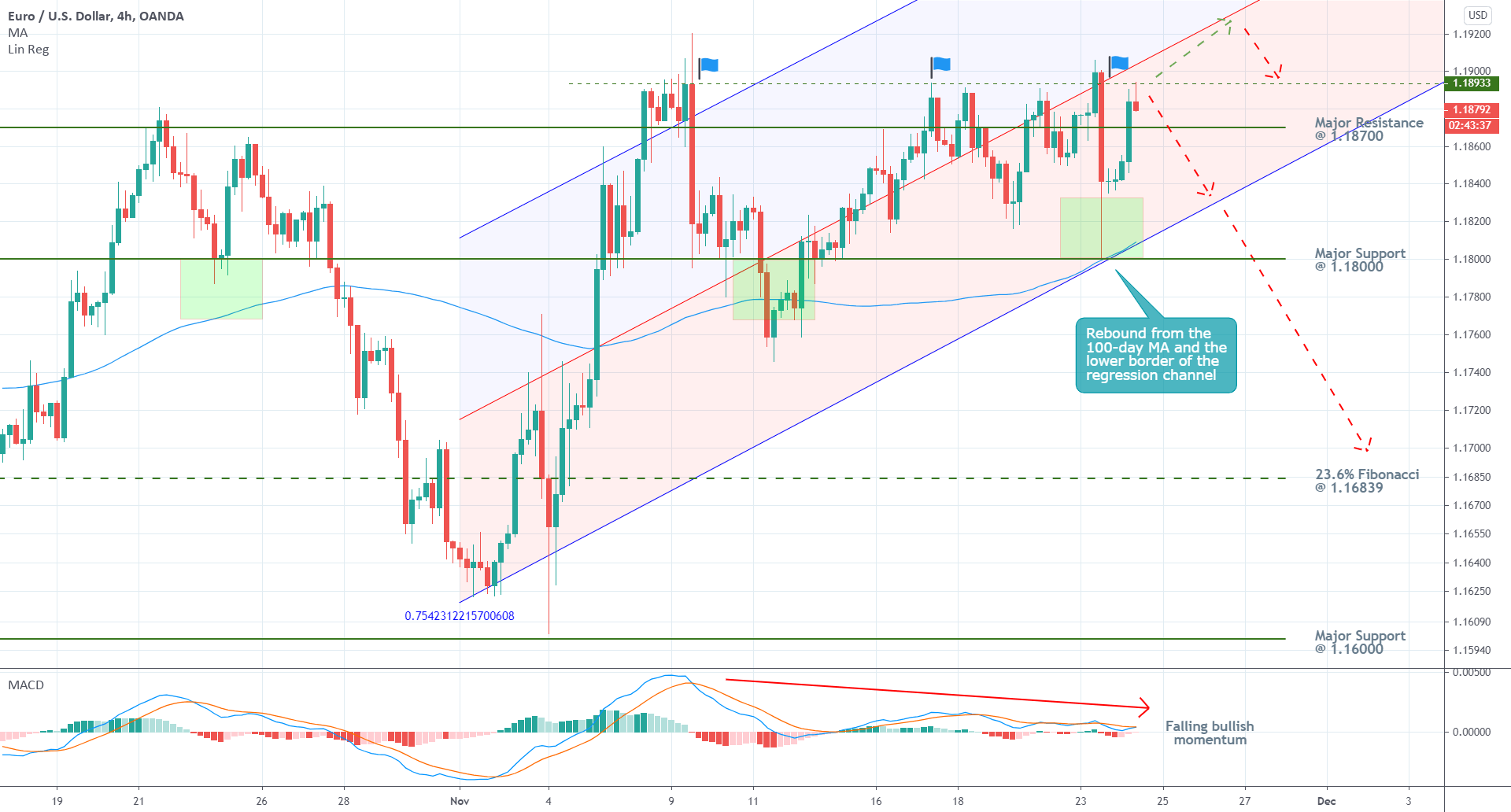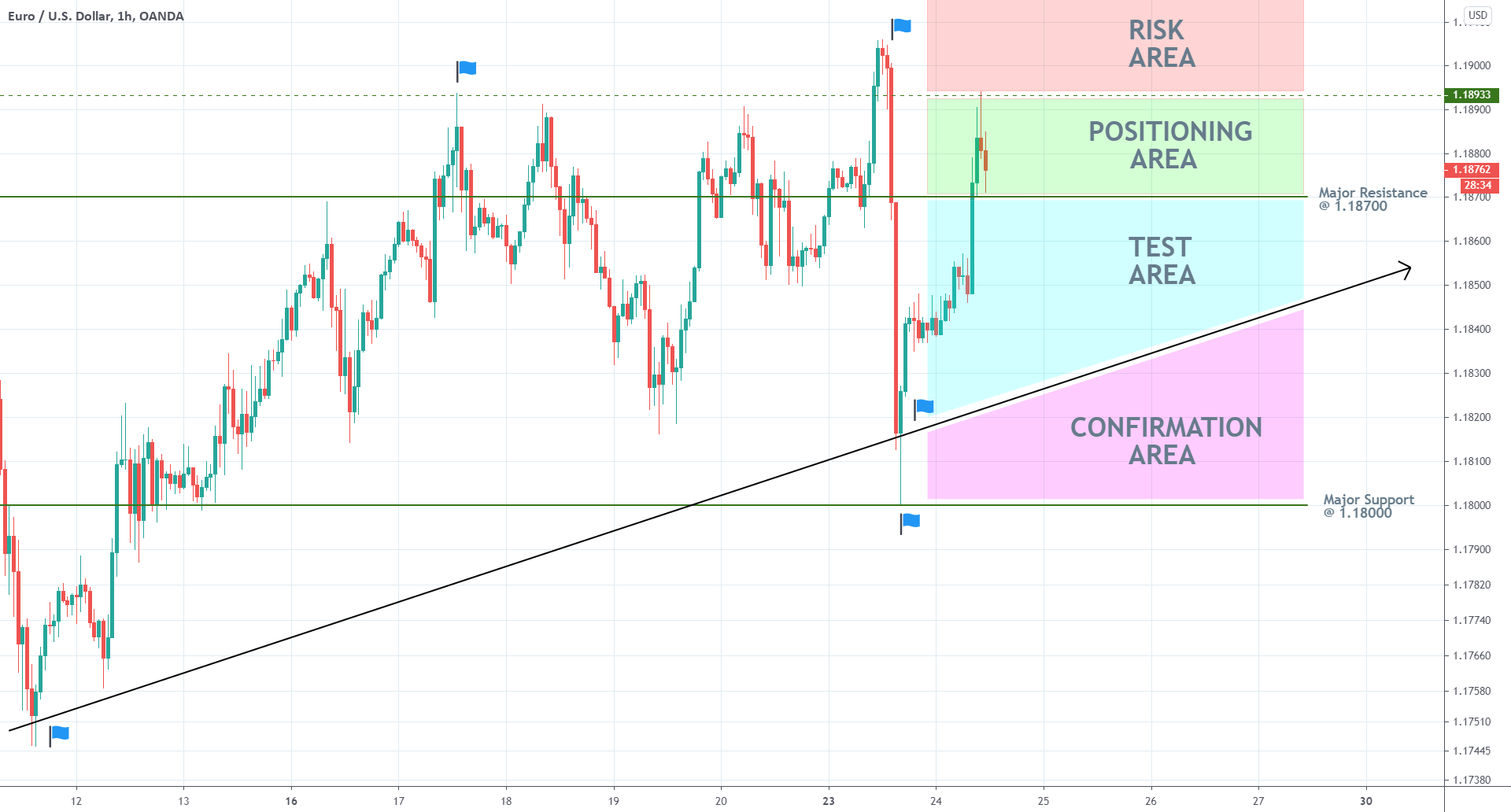The past several days have been especially intriguing, given the market's reactions to the AstraZeneca vaccine news and the latest developments in Washington. Gold tumbled yesterday as mounting, promising evidence underpins the development of a viable vaccine against the coronavirus. This market reaction demonstrates the sudden decrease in global demand for safe-haven assets and other low-risk securities.
Overall uncertainty continued to falter today, as Donald Trump started to relent on the Presidential transitionary process. He allowed President-Elect Joe Biden and his team access to the White House, and various administrative procedures and agencies. Even though Trump continues to refuse to concede, the market interpreted today's developments as representing another step further towards the successful transition of power.
The persisting risks to growth are thus tilted to the downside, as far as the general market is concerned, which is likely to support the US dollar finally. The greenback has gone through a difficult patch, as the last scramble for low-risk securities drove the demand for the world's most popular currency down. Nevertheless, the tide of the aggregate supply and demand dynamics seems to be shifting, which could lead to another reversal for the EUR/USD.
1. Long-Term Outlook:
As can be seen on the daily chart below, the pair remains concentrated within the boundaries of a clearly visible range, which spans between the major resistance level at 1.18700 and the 23.6 per cent Fibonacci retracement level at 1.16839. Given that the price action has consolidated around the upper border of the range for seven consecutive days, a new bearish correction seems more likely with every passing day. The aforementioned fundamentals could trigger such a rebound.
The ADX indicator has been threading below the 25-point benchmark since the 29th of September, which confirms the robustness of the range-trading environment. Such market conditions substantiate expectations for sudden price reversals from either of the underlying range's extremes. Moreover, the Stochastic RSI indicator is just now starting to exit out of its 'Overbought' extreme, which demonstrates that more and more traders weigh in on such a reversal.
If the price action does indeed start to depreciate, its next target level would be the lower limit of the range – the 23.6 per cent Fibonacci. Before the price action can reach it, however, it would have to break down below the 100-day MA (in blue), which is serving the role of a floating support. As can be seen, the price action already rebounded from the moving average the last time the pair reached it, which was when the MA converged with the Fibonacci support. Therefore, the market bears should be especially observant the next time the price action tests the 100-day MA.
Conversely, if the underlying market sentiment were to change unexpectedly (similarly to what happened with gold yesterday) and the price action manages to break out above the major resistance at 1.18700 decidedly, then the next target for the renewed bullish momentum would be the major resistance level at 1.20000. The latter bears significant psychological importance – it was reached only once since April 2018, and the price rebounded almost immediately afterwards.
2. Short-Term Outlook:
The behaviour of EUR/USD's price action in the short-term is even more demonstrative of a likely bearish reversal. As can be seen from the 4H chart below, the pair has already tested the resistance at 1.18933 on three separate occasions (the three flags). All of them turned out to be failed attempts at a breakout, which further supports the expectations for another reversal.
Notice also that a regression channel tool is applied to the latest upswing. The price action has consolidated around its middle line for quite a while now, and another rebound towards the channel's lower edge seems highly probable. This is confirmed by the fact that the underlying market momentum has been consistently falling since the price action established the peak of the latest upswing.
Before the price action can start depreciating towards the channel's lower boundary, however, it would have to penetrate below the psychologically significant support level at 1.18000. Notice also that the last time the price action reached this level, it rebounded. Moreover, it rebounded by leaving a massive lower shadow on the corresponding candle, which also tested the lower edge of the regression channel and the 100-day MA. In other words, the expected downturn could potentially be temporarily suspended around 1.18000.
Given the underlying range-trading sentiment, market bears can use contrarian trading strategies to utilise the current setup. As can be seen on the hourly chart below, there are several areas of key interest. Less risk-averse traders can look for entry opportunities within the 'Positioning Area', whereas more risk-averse traders could wait for a breakdown within the 'Test Area'.
The 'Risk Area' underscores the threat of more adverse fluctuations and false breakouts above 1.18933, while the ascending trend line demonstrates the likely levels where the new downtrend could experience temporary disruptions.
Once the price action manages to penetrate the 'Confirmation Area', the strength of the underlying bearish pressure would be confirmed. Hence, bears with open positions can look for opportunities to add to them, whereas other traders could look for opportunities to apply trend-continuation strategies, on the condition that the price action establishes a minor bullish correction. The primary target level remains the 23.6 per cent Fibonacci retracement at 1.16839.
3. Concluding Remarks:
While the underlying setup looks fairly solid, in that the price action seems poised to head towards the lower end of the aforementioned range, traders should be cautious when placing orders. As was seen yesterday with the price of gold, sudden ripples could invalidate the underlying ranging conditions. Hence, traders are better-off using narrow stop-loss orders.
Trading and investing on the financial markets carries a significant risk of loss. Each material, shown on this website, is provided for educational purposes only. A perfect, 100% accurate method of analysis does not exist. If you make a decision to trade or invest, based on the information from this website, you will be doing it at your own risk. Under no circumstances is Trendsharks responsible for any capital losses or damages you might suffer, while using the company’s products and services. For more information read our Terms & Conditions and Risk Disclaimer.
Recommended Content
Editors’ Picks

AUD/USD remains weak below 0.6300 despite upbeat Chinese PMI data
The AUD/USD pair remains under selling pressure around 0.6280 during the early Asian session on Thursday. The Australian Dollar pares losses against the Greenback after the stronger Chinese economic data. However, the upside might be limited as US President Donald Trump announced sweeping global reciprocal tariffs, prompting traders to turn cautious.

USD/JPY slumps to three-week low amid Trump's tariffs-inspired risk-off impulse
USD/JPY dives to a three-week low during the Asian session on Thursday as Trump's sweeping trade tariffs provide a strong boost to traditional safe-haven assets. The anti-risk flow triggers a steep decline in the US Treasury bond yields, which drags the USD back closer to a multi-month low touched in March.

Gold price hits fresh all-time peak in reaction to Trump's tariffs
Gold price spiked to a fresh record high on Thursday as investors grew increasingly concerned over the economic impact of Trump’s sweeping tariffs. This triggers a global risk-aversion trade and boosts the safe-haven bullion. Fed rate cut bets, declining US bond yields, and heavy USD selling benefits the non-yielding yellow metal.

Bitcoin and top altcoins slide as Trump kicks off reciprocal tariffs
Bitcoin and the entire crypto market saw a quick correction on Wednesday following President Donald Trump's reciprocal tariff announcements based on half of each country's respective rates.

Trump’s “Liberation Day” tariffs on the way
United States (US) President Donald Trump’s self-styled “Liberation Day” has finally arrived. After four straight failures to kick off Donald Trump’s “day one” tariffs that were supposed to be implemented when President Trump assumed office 72 days ago, Trump’s team is slated to finally unveil a sweeping, lopsided package of “reciprocal” tariffs.

The Best brokers to trade EUR/USD
SPONSORED Discover the top brokers for trading EUR/USD in 2025. Our list features brokers with competitive spreads, fast execution, and powerful platforms. Whether you're a beginner or an expert, find the right partner to navigate the dynamic Forex market.


